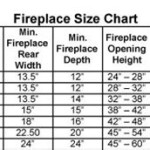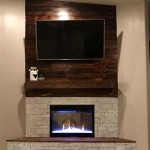How Do Ventless Gas Fireplaces Work?
Ventless gas fireplaces, also known as vent-free gas fireplaces, present a practical alternative to traditional wood-burning fireplaces and vented gas fireplaces, particularly in situations where installing a chimney or vent is difficult or impractical. Understanding the mechanics behind their operation is crucial for homeowners considering this heating option. These appliances are designed to burn gas with a near-perfect combustion process, minimizing the production of harmful byproducts and eliminating the need for external venting. This article delves into the workings of ventless gas fireplaces, outlining their key components, combustion process, safety mechanisms, and operational considerations.
Combustion Process and Efficiency
The core functionality of a ventless gas fireplace lies in its engineered combustion process. Unlike vented fireplaces that exhaust combustion byproducts outside the dwelling, ventless models are designed to burn gas completely, converting the fuel into heat, water vapor, and a minimal amount of carbon dioxide. This near-complete combustion is achieved through specialized burner designs and precise air-to-fuel ratios. The efficiency of these fireplaces is significantly higher than vented options, often reaching 99% because the heat generated is directly released into the room instead of being expelled through a chimney.
The burner system is typically comprised of a matrix of tiny ports or slots through which the gas flows and mixes with air. This creates a large surface area for combustion, promoting a more complete and efficient burn. The burner is usually constructed from durable materials like stainless steel or ceramic to withstand high temperatures and ensure longevity. The size and design of the burner directly influence the fireplace's heat output, measured in British Thermal Units (BTUs). A higher BTU rating indicates a greater heat-generating capacity.
The air-to-fuel ratio is meticulously controlled to optimize combustion. Too little air results in incomplete combustion, leading to the production of carbon monoxide, a dangerous and odorless gas. Too much air can cool the flame and reduce efficiency. Modern ventless fireplaces incorporate sophisticated controls and sensors to maintain the ideal air-to-fuel mixture, ensuring safe and efficient operation. These controls often include a pilot light system that ignites the main burner when heat is required.
Oxygen Depletion Sensors (ODS) are crucial safety features. These sensors continuously monitor the oxygen levels in the room. If the oxygen level drops below a safe threshold, indicating a potential buildup of combustion byproducts, the ODS automatically shuts off the gas supply to the fireplace, preventing carbon monoxide poisoning.
Key Components of a Ventless Gas Fireplace
A ventless gas fireplace consists of several essential components working together to provide heat and ambiance. These components include the burner assembly, gas control valve, pilot light system, oxygen depletion sensor (ODS), and decorative elements such as ceramic logs or glass beads. Understanding the function of each component is vital for appreciating the overall operation of the fireplace.
The gas control valve regulates the flow of gas to the burner. This valve is often equipped with a pressure regulator to ensure a consistent gas supply, even if the gas pressure fluctuates. The valve can be manually operated or controlled electronically via a thermostat or remote control. Electronic controls often offer features such as adjustable flame height and programmable timers.
The pilot light system provides a continuous ignition source for the main burner. The pilot light is a small, constantly burning flame that ignites the gas flowing to the main burner when heat is requested. Some models utilize electronic ignition systems that eliminate the need for a standing pilot light, saving energy when the fireplace is not in use. These systems typically use a spark igniter to ignite the gas when the thermostat calls for heat.
The decorative elements, such as ceramic logs or glass beads, serve both aesthetic and functional purposes. They radiate heat into the room and create a visually appealing flame effect. Ceramic logs are designed to resemble real wood logs and are arranged to maximize heat distribution. Glass beads provide a more modern aesthetic and reflect the flames, creating a shimmering effect. The placement of these decorative elements is critical for proper fireplace operation, as they can affect the air circulation around the burner.
The fireplace chassis or firebox houses all the components and provides a safe enclosure for the combustion process. These enclosures are typically made from steel or cast iron and are designed to withstand high temperatures. The firebox also incorporates ventilation openings to ensure adequate airflow for combustion. Some models feature blowers or fans that circulate warm air into the room, further enhancing heat distribution.
Safety Mechanisms and Operational Considerations
Safety is paramount in the design and operation of ventless gas fireplaces. While these appliances are designed for near-complete combustion, potential risks associated with gas-burning appliances necessitate robust safety mechanisms. The ODS is a primary safety feature, but other considerations include proper installation, ventilation, and maintenance.
Proper installation is crucial for safe operation. Ventless gas fireplaces must be installed according to the manufacturer's instructions and local building codes. This typically involves ensuring adequate clearances from combustible materials, proper gas line connections, and level placement of the unit. Improper installation can impair the fireplace's performance and increase the risk of fire or carbon monoxide poisoning. It is generally advisable to have a qualified technician install the fireplace.
While ventless fireplaces do not require external venting, adequate ventilation within the room is still necessary. The fireplace consumes oxygen during combustion, and while the levels of carbon dioxide produced are low, it is still important to provide a source of fresh air. This can be achieved by opening a window slightly or ensuring that the room is not completely airtight. The amount of ventilation required depends on the size of the room and the BTU rating of the fireplace. Local building codes often specify minimum ventilation requirements for ventless gas appliances.
Regular maintenance is essential for maintaining the fireplace's efficiency and safety. This includes cleaning the burner assembly, inspecting the gas lines for leaks, and checking the ODS function. The burner assembly can accumulate dust and debris over time, which can affect combustion efficiency. Gas lines should be inspected periodically for cracks or leaks. The ODS should be tested regularly to ensure that it is functioning correctly. The manufacturer's instructions should be consulted for specific maintenance recommendations.
It is crucial to understand the limitations of ventless gas fireplaces. They are designed as supplemental heating sources and are not intended to be the primary heating source for a dwelling. Prolonged use of a ventless fireplace in a small, poorly ventilated room can lead to a buildup of combustion byproducts and potentially hazardous conditions. It is also important to be aware of any local regulations or restrictions regarding the use of ventless gas fireplaces, as some jurisdictions may have specific requirements or prohibitions.
Furthermore, ventless gas fireplaces are not suitable for all individuals. People with respiratory problems, such as asthma or COPD, may be more sensitive to the byproducts of combustion and should consult with a healthcare professional before using a ventless fireplace. It is also important to monitor for any signs of carbon monoxide poisoning, such as headaches, dizziness, or nausea, and to immediately turn off the fireplace and seek medical attention if these symptoms occur.
Choosing the appropriate size of ventless gas fireplace for the room is also an important consideration. Over-sizing the fireplace can lead to excessive heat and discomfort, while under-sizing it may not provide adequate heating. The BTU rating of the fireplace should be selected based on the size of the room and the desired level of heating. It is generally recommended to consult with a qualified heating professional to determine the appropriate size for your specific needs.

Are Vent Free Gas Fireplaces Safe Ventless
.aspx?strip=all)
Ventless Fireplaces Explained Safety Of Vent Free Fires

Vented Vs B Vent Direct Free Dixie S

Gas Fireplaces Direct Vent Vs Free Fine Homebuilding

How To Select And Install A Gas Fireplace Log Set Fireplaces Direct Learning Center
Understanding How Direct Vent Works Heat Glo

Vented Vs Ventless Gas Fireplace Logs

What You Need To Know About Gas Fireplace Logs Fireplaces Direct Learning Center

Vented Vs Ventless Gas Logs What S The Difference

How Gas Fireplaces Logs Work At Gasfireplaces Org








